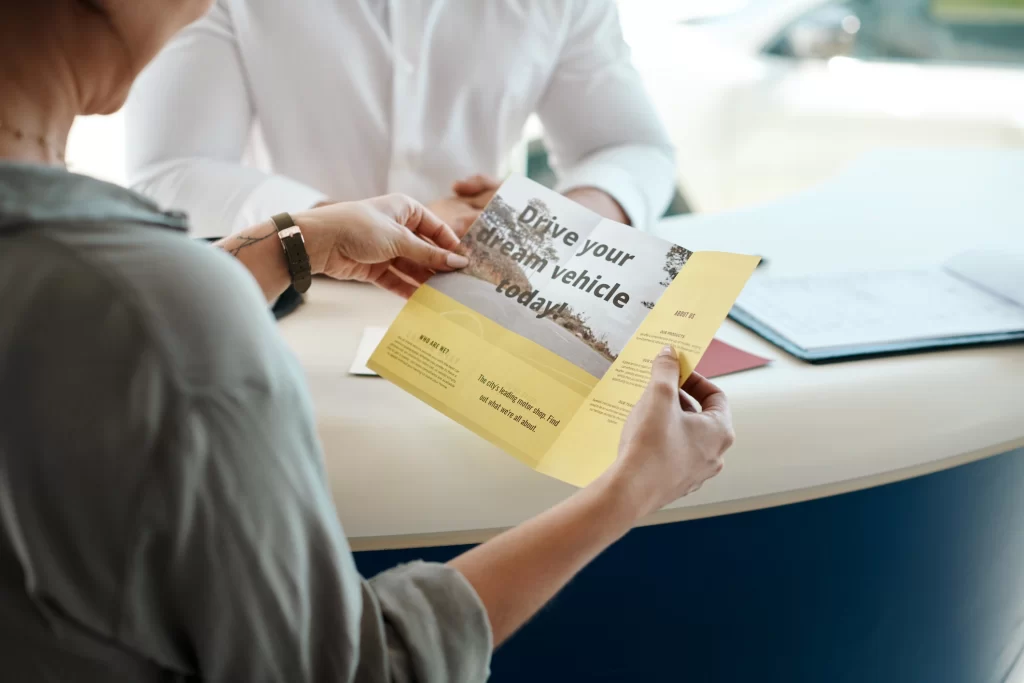Key Takeaways:
- Despite digital advancements, well-crafted brochures are still valuable in marketing due to their tangible nature and lasting impact.
- The combination of innovative design and cutting-edge technology enhances the effectiveness of brochures, engaging consumers on multiple levels.
- A carefully integrated brochure campaign complements digital strategies and contributes significantly to a comprehensive omnichannel marketing plan.
Table of Contents
- Understanding the Enduring Appeal of Printed Brochures
- Designing Brochures for Impact: Less Is More
- The Intersection of Creativity and Technology in Brochure Printing
- Leveraging Brochures for Targeted Marketing Campaigns
- Measuring the Success of Your Brochure in the Digital Age
- Brochures in the Context of Omnichannel Marketing
- Cost-Effective Tips for Producing High-Quality Brochures
- Creative Content Ideas for Compelling Brochures
Understanding the Enduring Appeal of Printed Brochures
In today’s digital age, the printed brochure remains an effective form of physical marketing. Brochures have deep historical roots in commerce and continue effectively showcasing products and services, providing consumers with a tangible experience. This tactile aspect creates a memorable sensory experience, fostering a more robust consumer and brand connection. Furthermore, the concrete nature of brochures offers a decidedly different experience from the ephemeral nature of online content, allowing people to engage at their leisure, free from screen fatigue and online distractions. Thoughtfully executed brochure printing exploits this unique advantage, pairing evocative design with a tactile appeal to make a powerful statement in any campaign.
Designing Brochures for Impact: Less Is More
A well-designed brochure can be an oasis of calm and clarity in the constant information deluge that defines modern life. The strategic use of white space and minimalist design principles not only exude sophistication but also serve as a practical means to draw attention to the most critical message elements. Fundamental design principles such as balance, alignment, and contrast make brochures visually engaging and easy to digest. Moreover, the elegance of simplicity in design means that the content within must be equally potent, distilled to its most impactful points, to connect with the reader instantly. Well-designed brochures combine form and function to captivate readers and generate interest in the brand, encouraging them to engage more deeply.
The Intersection of Creativity and Technology in Brochure Printing
Brochure printing is an arena where creativity meets cutting-edge technology, allowing for dynamic advances in how information is presented. A resurgence in innovative printing methods, from embossing to foil stamping, has provided an array of options for making a brochure feel as delightful to touch as it is to view. These technological shifts also give rise to eco-friendly printing practices, which reduce environmental impact and align a brand’s tangible marketing efforts with a growing consumer focus on sustainability. Adding interactive elements like QR codes or augmented reality can transform a static brochure into an engaging gateway to online content. It seamlessly integrates print campaigns into a digital ecosystem.
Leveraging Brochures for Targeted Marketing Campaigns
Brochures excel in delivering targeted content to specific audience segments, making them an invaluable tool in the marketer’s toolkit. Carefully strategized distribution efforts put brochures in the hands of consumers most likely to be influenced by them, enhancing the potential for conversion to sales. Incorporating persuasive calls to action encourages immediate engagement, whether a phone call, a website visit, or a visit to a physical location. Further tailoring content to resonate with distinct consumer groups amplifies relevance and personalization, increasing the likelihood of a positive, impactful brand interaction.
Measuring the Success of Your Brochure in the Digital Age
Just as digital marketing efforts are tracked and analyzed for performance, so too can the effectiveness of a brochure campaign be quantified. Creative integration of physical brochures with online analytics tools through custom URLs, QR codes, and promo codes provides a rich dataset to assess engagement and analyze prospects’ behaviors. This confluence of traditional and digital tracking methods equips marketers with powerful insights, enabling continuous improvement of content and distribution strategies for maximum impact.
Brochures in the Context of Omnichannel Marketing
In today’s marketing reality, where consumers expect a seamless brand experience across all touchpoints, brochures have found new vitality as part of an omnichannel marketing approach. They are a physical counterpart to digital efforts, reinforcing messages and offering a tangible brand experience that digital cannot replicate. Brochures must, therefore, be aligned with online content to provide a consistent narrative and visual language. This strategic harmony enhances the overall effectiveness of marketing campaigns while fostering trust and recognition among consumers.
Cost-Effective Tips for Producing High-Quality Brochures
Despite the myriad benefits of brochures, it’s essential to remain mindful of production costs. Budget-friendly design and printing solutions do not necessitate a sacrifice in quality. Material selections play a significant role, with choices about paper weight, texture, and finish affecting cost and the brochure’s look and feel. Thoughtful design can minimize waste and make for more efficient print runs. Bulk purchasing and print-on-demand options help to manage inventory and budget, allowing companies to respond flexibly to their marketing needs while keeping costs in check.
Creative Content Ideas for Compelling Brochures
At its core, a brochure is a storytelling device. Embracing this concept opens content possibilities, from customer success stories to immersive brand narratives. Using striking imagery, compelling headlines, and engaging copy can turn a simple brochure into a powerful touchpoint that conveys the spirit and values of a brand. When paired with a thoughtful layout that guides readers through the content, a brochure moves from an essential informational tool to a compelling element of the brand’s overall marketing strategy.
